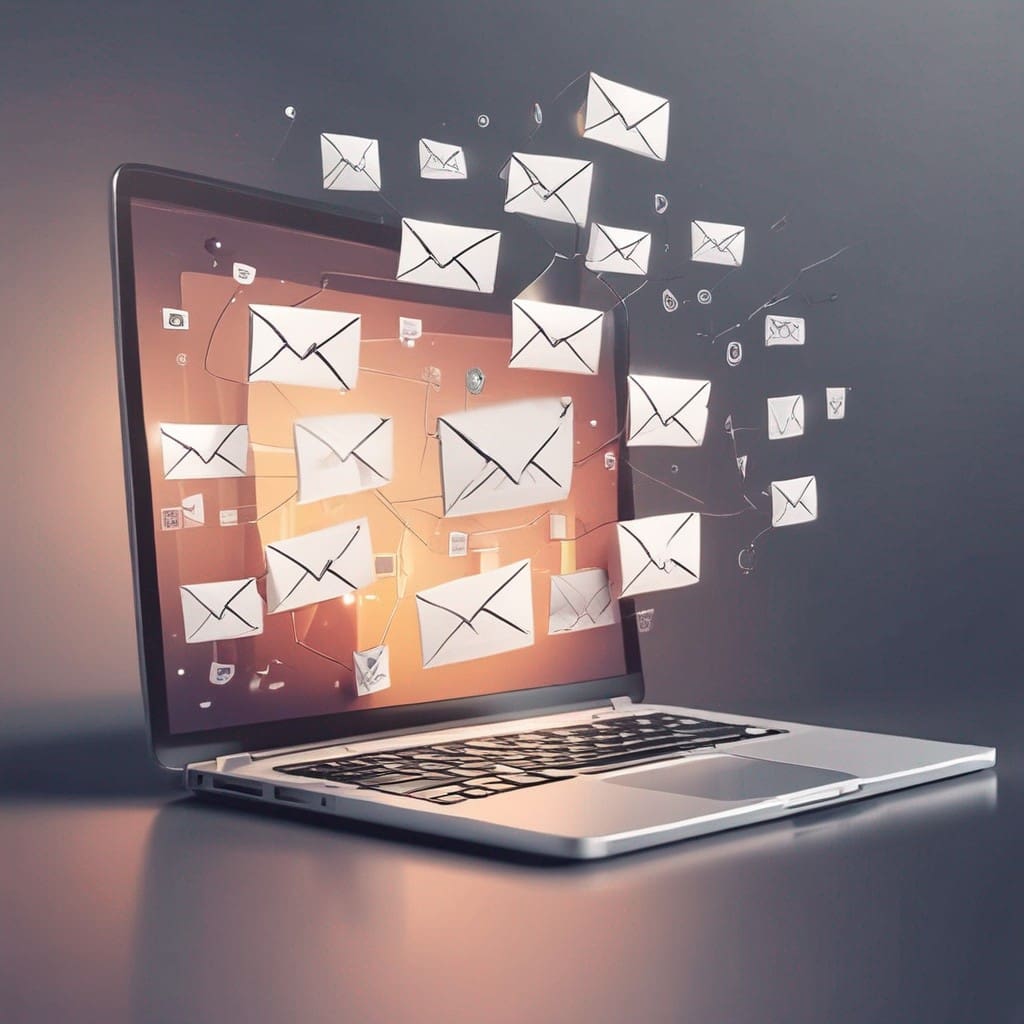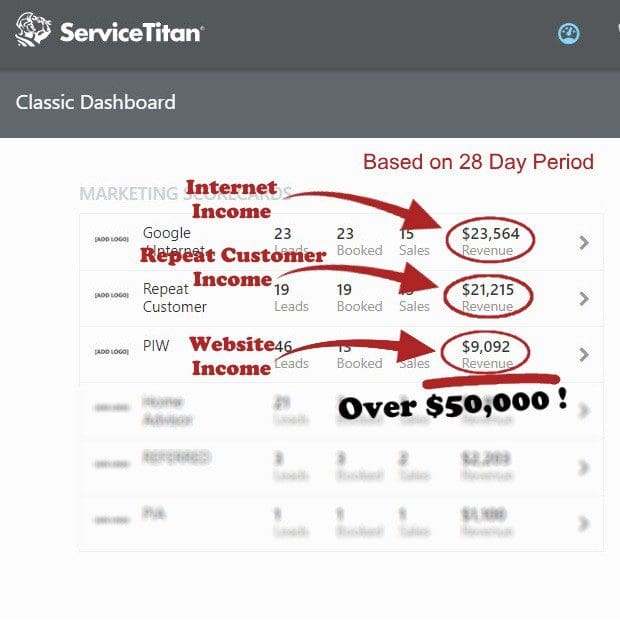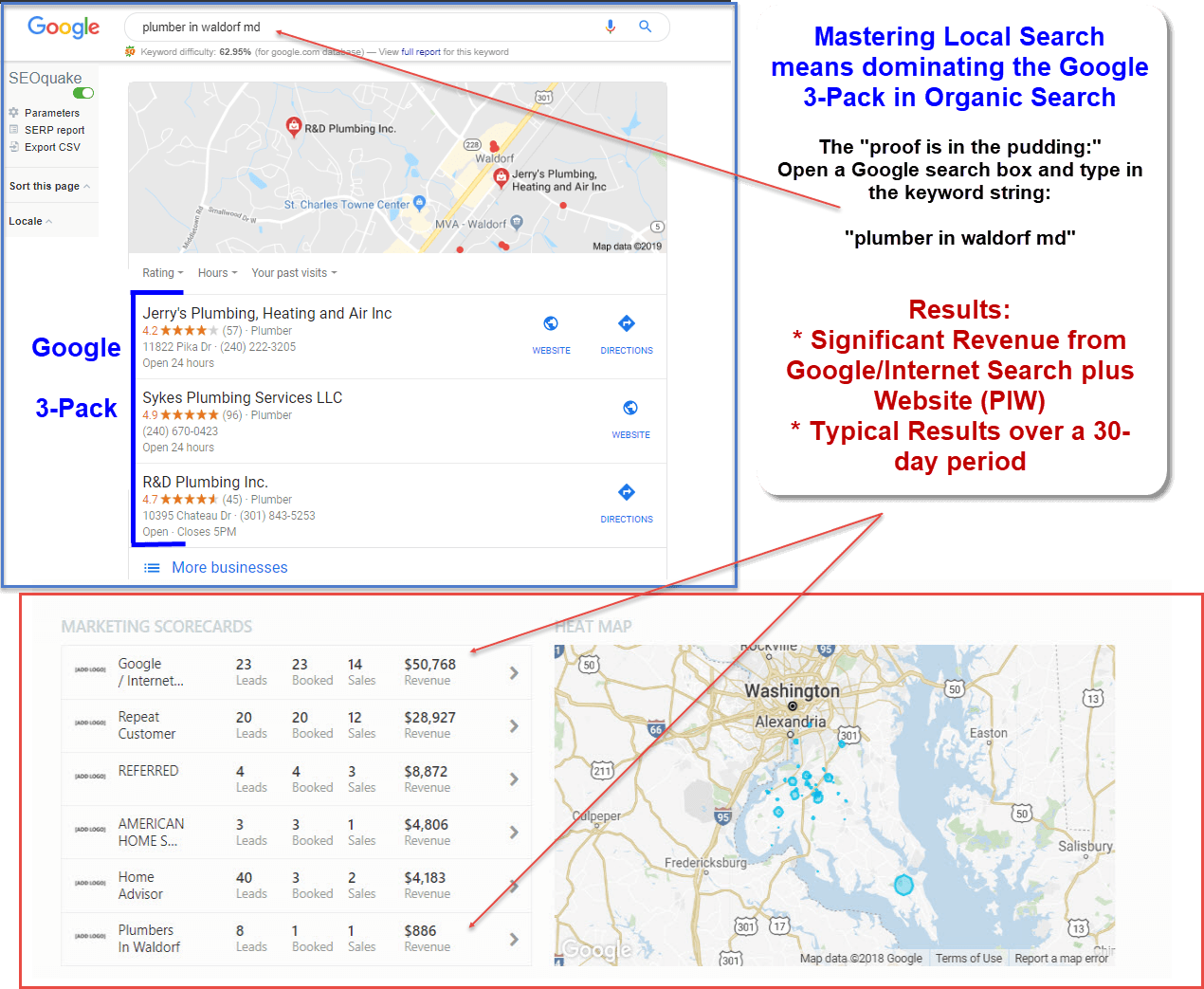 Email marketing is a game changer for small businesses. Unlike traditional advertising, it offers a direct line to your customers. You can reach them right in their inbox, where they spend a lot of time. This method is cost-effective and measurable, making it perfect for small budgets.
Email marketing is a game changer for small businesses. Unlike traditional advertising, it offers a direct line to your customers. You can reach them right in their inbox, where they spend a lot of time. This method is cost-effective and measurable, making it perfect for small budgets.
Many small businesses can easily harness the power of this tool. Despite common misconceptions about its complexity, email marketing is a straightforward process that can significantly boost sales and build relationships. It allows you to easily share updates, promotions, and valuable content. With the right strategy, your emails can turn casual readers into loyal customers. Let’s explore how you can effectively utilize this tool.
Key Takeaways
- Start building your email list today by offering incentives like discounts or free resources to attract subscribers.
- Create a content strategy with valuable information, promotions, and engaging stories to keep your audience interested.
- Ensure your emails reach the inbox by following best practices for deliverability, such as verifying your domain and avoiding spammy language.
- Measure the success of your campaigns regularly using metrics like open rates and click-through rates to understand what works best.
- Personalize your emails by segmenting your audience based on their preferences or behaviors, which can lead to higher engagement.
- Utilize AI tools to automate tasks and analyze data, saving time while improving the effectiveness of your email marketing efforts.
Why Email Marketing Matters
Email Marketing Benefits: High ROI
Email marketing offers a high return on investment, often yielding significant returns with minimal investment. Businesses can earn an average of $42 back for every dollar spent. Email is one of the most cost-effective marketing strategies, providing a promising outlook for small businesses.
Cost-effective campaigns maximize revenue. Small businesses can reach a large audience without breaking the bank. They can easily create and send emails using affordable platforms. Trackable metrics demonstrate clear financial benefits. Metrics like open rates and click-through rates help businesses understand what works. This data allows for adjustments that enhance future campaigns.
Email Marketing Benefits: Customer Relationships
Email marketing helps foster long-term relationships. Consistent communication keeps customers informed and engaged, and regular updates about products or services build a connection with the audience.
Building trust is essential for any business. Providing valuable content shows that a company cares about its customers’ needs. Businesses can share informative articles, tips, or special promotions through email. Strengthening loyalty happens through personalized interactions. When customers feel valued, they are more likely to return.
Email Marketing Benefits: Personalized Communication
Personalized communication makes a big difference in email marketing. Addressing subscribers by their names adds a personal touch. It shows that the business recognizes them as individuals, not just numbers.
that the business recognizes them as individuals, not just numbers.
Tailoring content to individual preferences increases engagement. Sending targeted messages based on past purchases or browsing behavior keeps customers interested. Relevant offers encourage them to take action, whether purchasing or signing up for an event.
Businesses should segment their lists based on customer behavior. This ensures that each subscriber receives information that matters to them—the more relevant the content, the higher the chances of engagement and conversion.
Building Your Email List
Effective Opt-In
Clear calls to action boost sign-ups. Use phrases like “Join our newsletter” or “Get 10% off your first order.” These messages attract attention and encourage users to subscribe.
Offering incentives can significantly increase your opt-in rates. Discounts, exclusive content, or free resources motivate potential subscribers. For example, a small business might offer a free e-book in exchange for an email address.
Keep the opt-in process simple. A complicated sign-up form can lead to drop-offs. Use minimal fields like name and email to make signing up quick and easy.
Email Marketing Benefits: Subscriber-based media is a powerful tool for growing your email list. Share links to your sign-up form on platforms like Facebook and Instagram. Website pop-ups can also effectively capture visitors’ emails.
Events provide another opportunity to collect email addresses. Whether online or in-person, ask attendees to subscribe during registration. This approach builds a targeted subscriber base.
Segmenting your subscribers helps tailor your messaging. Group them based on demographics, interests, or behaviors. This method ensures you send relevant content to each group.
Regularly reviewing and cleaning your subscriber list is a crucial responsibility. By removing inactive subscribers, you can ensure that your emails are reaching engaged recipients who are more likely to open them and take action. This proactive approach is key to maintaining a healthy subscriber base.
Email Marketing Benefits: Targeted Messaging
Sending specific messages to different audience segments enhances engagement. For example, a clothing store could send promotions for winter wear to customers who previously bought jackets.
Addressing unique needs increases relevance. If a subscriber shows interest in fitness products, send them related offers. For instance, if a subscriber has shown interest in running shoes, you can send them a promotion for a new line of running shoes. This personalization improves the chances of conversions.
Tailored content leads to better open and click-through rates. Emails that resonate with recipients encourage them to interact with your brand. High engagement signals that your emails are valuable and worth reading.
Developing Your Content Strategy
Compelling Subject Lines
Subject lines play a crucial role in email marketing. They can determine if your email gets opened or ignored. Crafting attention-grabbing subject lines boosts open rates significantly. Use urgency to create a sense of need. Phrases like “Limited Time Offer” or “Last Chance” can motivate readers to act quickly.
Curiosity also works well. Questions like “Have You Tried This?” can pique interest. Keep subject lines concise, ideally under 50 characters, to ensure they appear fully on mobile devices. Make sure they relate directly to your email content. Misleading subject lines frustrate readers and may lead to unsubscribes.
Regular Newsletters
Regular newsletters keep your audience engaged. They provide consistent updates about your business. Share company news, product launches, and industry insights. This builds trust and keeps customers informed.
Include engaging content in your newsletters. Tips related to your products can be constructive. Personal stories about your business journey can connect with readers emotionally. Special offers also encourage purchases and increase loyalty.
Aim for a schedule that works for you, whether weekly or monthly. Consistency is vital in maintaining subscribers’ interest.
Mobile-Friendly Emails
Optimizing emails for mobile devices is essential today. Many people check their emails on smartphones or tablets. Using responsive templates ensures readability across all screens. A well-designed email looks good on a large desktop or a small phone.
Test your emails on various devices before sending them out. Check how images and text appear on different screen sizes. Ensure that links are easy to click on smaller screens as well.
Mobile-friendly design enhances user experience. A positive experience encourages readers to engage with your content further.
Maintaining Deliverability
Avoid Spam Filters
Using clean and professional email templates is vital. These templates should be easy to read and visually appealing, helping convey your brand’s message clearly. Clean templates refer to designs that are not cluttered and have a clear information hierarchy. Professional templates should reflect your brand’s style and tone.
Spammy language can hurt your deliverability. Words like “free,” “urgent,” or excessive exclamation marks can trigger spam filters. Keep your language straightforward and relevant.
Proper authentication is also necessary. Use protocols like SPF, DKIM, and DMARC to improve your sender reputation. These measures show email providers that you are a legitimate sender.
Email List Hygiene
It’s essential to regularly clean your email list. Remove inactive subscribers who haven’t engaged in months. This practice helps improve open rates and overall engagement.
Implementing double opt-in can confirm interest from subscribers. This process requires users to verify their subscription via email. It reduces bounce rates and ensures quality leads.
Monitoring unsubscribes is equally important. Track why people unsubscribe and adjust your strategy accordingly. Keeping a healthy list enhances your email marketing effectiveness.
Consistent Sending Schedule
Establishing a regular email schedule builds anticipation among subscribers. When they know when to expect emails, they are more likely to engage with them.
Avoid overwhelming subscribers with too many emails. Bombarding them daily can lead to increased unsubscribes. Find a balance that keeps your audience interested without annoying them.
Tracking performance helps identify the best-sending frequency. Analyze open rates, click-through rates, and engagement metrics. Adjust your schedule based on these insights for better results.
Measuring Success
Click-Through Rates
Clear calls to action are essential in your emails. They guide readers on what to do next. Use buttons and links effectively. This makes it easy for subscribers to visit your website.
Analyzing click data helps refine future email content. If a particular link gets many clicks, consider using similar content again. Focus on what works best to keep your audience engaged.
Engagement Rates
Engagement rates show how often subscribers interact with your emails. High engagement means your audience finds value in your messages. Measure interactions like opens, clicks, and shares regularly.
Incorporating interactive elements can boost engagement. Polls and surveys invite subscribers to share their opinions. This not only increases interaction but also provides valuable feedback for future campaigns.
Conversion Tracking
Conversion tracking is crucial for understanding the effectiveness of your campaigns. Monitor the number of email recipients who take desired actions, such as purchasing or signing up for a newsletter.
Using UTM parameters can help track conversions from specific email campaigns. These parameters allow you to see where traffic comes from. This data is vital for assessing which emails drive results.
Analyze conversion data after each campaign. Look for trends that indicate successful strategies. Based on this information, adjust future email tactics to improve overall performance.
Personalization and Segmentation
Customer Segments
Dividing your audience into meaningful groups is essential. Data such as age, location, and purchase history can help you understand what each group prefers. Tailor your content and offers to match these preferences. For example, a clothing store may send different promotions to teens and adults. By using segmentation, you deliver more relevant emails, which increases the chances of engagement and conversion.
Understanding customer segments allows businesses to create targeted campaigns. For example, a bakery could segment customers based on their favorite products. Sending personalized recipes or special offers on those items can boost sales. The more relevant the email, the higher the open rates.
Dynamic Content
Dynamic content adds a personal touch to your emails. It allows you to change elements in real-time based on subscriber behavior. For instance, if someone clicks on a specific product link, you can show related products in future emails. This creates a more engaging experience for the reader.
Using dynamic elements makes your emails visually appealing. Incorporate images, videos, or animations that relate to user interests. Engaging content keeps subscribers interested and encourages them to take action—the more interactive the email, the better the response rates.
Behavioral Triggers
Setting up automated emails based on subscriber actions is critical to effective marketing. Welcome emails are crucial for new subscribers. They make a great first impression and encourage engagement right away.
Abandoned cart reminders serve as a gentle nudge to potential buyers. These emails remind customers about items left behind in their carts. Follow-up emails after purchases can also enhance customer relationships. They show appreciation and invite feedback.
Using behavioral triggers effectively nurtures leads. Subscribers feel valued when they receive timely messages tailored to their actions. This approach drives conversions by addressing needs at specific moments.
Time-Saving Tactics
Automation Tools
Email marketing platforms offer valuable automation tools. These tools allow businesses to set up automated email sequences. For example, a welcome email can trigger when someone subscribes, saving time and ensuring consistent communication. We help all our clients with automation. We place our clients in our CRM as a sub-account where they have full access to our Business Growth Engine.
Automation helps small businesses focus on strategy. While the platform handles execution, owners can consider their next steps, leading to better planning and more effective campaigns.
Pre-Scheduled Campaigns
Planning is essential for successful email marketing. Pre-scheduling emails allow for consistent delivery. Small businesses can align their campaigns with holidays, special events, or promotions. For instance, sending a holiday sale email weeks in advance can boost sales.
Timely communication keeps the audience engaged. When businesses plan, they ensure relevant messages reach their customers at the right time. This approach builds trust and improves customer relationships.
Templates and Design
Using professional templates makes emails stand out. A polished look grabs attention and reflects well on the brand. Templates help maintain consistency with brand colors and fonts so recipients recognize the business immediately.
Visually appealing emails are easier to read. Simple designs guide readers through the content smoothly. Small businesses can use images, bullet points, and clear headings to enhance readability. Engaging designs lead to higher open rates and click-throughs.
AI in Email Marketing
Content Generation
Creating valuable and engaging content is crucial for effective email marketing. AI tools can help generate ideas that resonate with your audience. These tools analyze what works best based on past emails, suggest topics, and even help draft messages.
Using a mix of text, images, and videos keeps subscribers interested. Visuals grab attention quickly. A simple picture or a short video can explain complex ideas quickly. Repurposing existing content also saves time. For example, turning a blog post into an email series engages readers differently. Sharing customer stories adds authenticity and builds trust.
This has become much easier with the advancement of AI tools like Google’s Gemini.
Predictive Analytics
Data plays a vital role in predicting subscriber behavior. Businesses can use AI to analyze past interactions and optimize their campaigns. This helps identify trends and patterns over time. Understanding what works allows for better targeting in future emails.
Enhancing personalization is another benefit of predictive insights. By knowing what subscribers prefer, businesses can send tailored messages. Personalized emails have higher open rates and engagement levels. For instance, sending them related offers makes sense if a customer often buys sports gear.
Customer Insights
Gathering data on subscriber preferences is essential for improvement. AI tools collect feedback through surveys or engagement metrics. This information helps businesses understand what content resonates most with their audience.
Using insights effectively tailors content and improves relevance. If subscribers show interest in specific topics, focusing on those areas increases engagement. Continuously refining strategies based on customer feedback leads to better results over time.
Businesses should regularly review their email performance metrics, including open rates, click-through rates, and conversion rates. Adjusting strategies based on these insights ensures ongoing success.
Best Practices for Small Business
A/B Testing
Testing different email elements is crucial. A/B testing helps identify what works best for your audience. You can compare subject lines and content and send times to see which ones get better responses. For example, you might test two subject lines to see which one gets more opens.
Use the results from these tests to optimize future email campaigns. If one subject line performs better, use that style in your subsequent emails. This method allows you to adapt based on accurate data rather than guesswork. Continuous testing leads to improved engagement over time.
Know Your Audience
Understanding your subscribers’ needs is essential. Gather insights about their preferences through surveys and feedback forms. Ask questions about what type of content they enjoy and how often they want to hear from you. This information helps shape your email strategy effectively.
Personalizing content makes a significant difference. Use the insights gathered to tailor messages that resonate with your audience. For instance, highlight special offers in your emails if subscribers prefer discounts. This approach builds a stronger connection with your audience and increases engagement.
Build Subscriptions
Encouraging sign-ups through multiple channels increases your email list. Promote your newsletter on social media platforms and your website. Make it easy for visitors to subscribe by prominently placing sign-up forms.
Offering valuable incentives can boost subscriptions significantly. Consider providing exclusive discounts or free resources as a reward for signing up. These incentives make potential subscribers more likely to join your list.
Promoting your email list consistently is key. Share testimonials from current subscribers about the benefits they receive. Highlighting positive experiences encourages others to subscribe as well.
Closing Thoughts
Email marketing is a game-changer for small businesses. It’s not just about sending messages; it’s about building relationships. You’ve learned how to grow your email list, craft engaging content, and keep your emails out of the spam folder. With the right strategies, you can measure success and personalize your approach. Plus, leveraging AI can save you time and boost your impact.
Now, it’s time to put these insights into action. Start crafting your email campaigns today and watch your business thrive. Don’t wait—your audience is eager to hear from you! Dive in, experiment, and refine your strategy. The world of email marketing awaits, so go ahead and make your mark!
Frequently Asked Questions
Why is email marketing important for small businesses?
Email marketing helps small businesses connect directly with customers. It’s cost-effective, builds relationships, and boosts sales. Consider it a personal invitation to your store—everyone loves a good invite!
How can I build my email list effectively?
Start by offering something valuable, like discounts or exclusive content. Use sign-up forms on your website and social media. Remember, it’s about creating a community, not just collecting emails.
What kind of content should I include in my emails?
Focus on value! Share tips, news, promotions, or customer stories. Your emails should feel like a friendly chat rather than a sales pitch. Keep it engaging and relevant to your audience.
How can I ensure my emails land in the inbox?
Remove inactive subscribers to maintain a clean list. Use double opt-in methods and avoid spammy words. Think of it as keeping your front door clean—you want people to come in!
How do I measure the success of my email campaigns?
Track open rates, click-through rates, and conversions. These metrics tell you what works and what doesn’t. It’s like checking your scorecard after a game—you must know how you’re doing!
What is personalization in email marketing?
Personalization means tailoring content to individual subscribers based on their preferences or behavior. It’s like giving each customer a tailored gift—it makes them feel unique and valued.
How can AI help with my email marketing?
AI can analyze data to optimize send times, segment audiences, and create content. It’s like having an intelligent assistant who knows exactly what your customers want before they do!

 Call Sam @
Call Sam @









